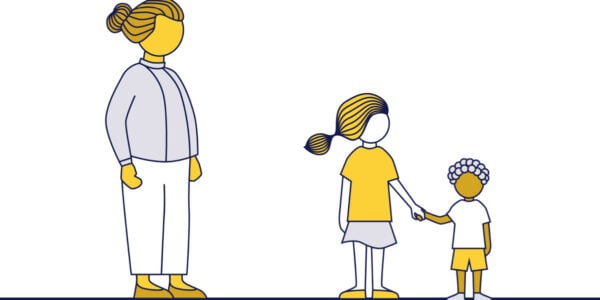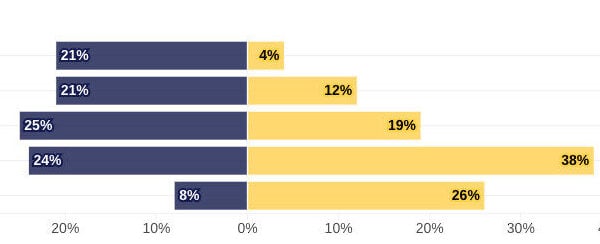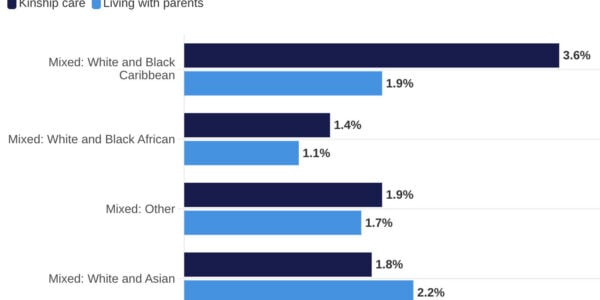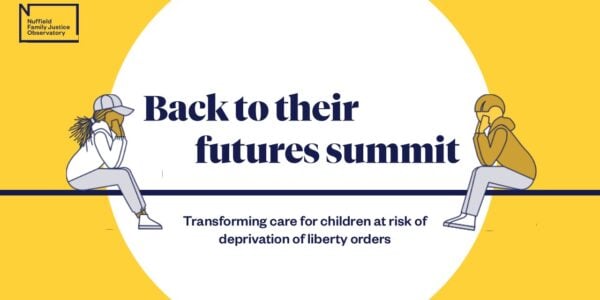About
This summary highlights the main findings of an analysis of the applications for care proceedings contained in court files in the East London Family Court in relation to 73 older children and young people (aged 10 to 17) between July 2019 and July 2020. It forms part of a series of work that aims to help build a better understanding of the reasons why older children and young people are being brought into care proceedings.
Disclaimer
Nuffield FJO has funded this project, but the views expressed are those of the authors and not necessarily those of Nuffield FJO or the Foundation.
In recent years there has been growing recognition of the increasing number of older children and young people coming before the family courts, and the complexity and diversity of their needs. This has raised concern about the capability of child protection and family justice to respond to the needs of older children and young people within a system that has until recently primarily focused on protecting younger children from risks within the family home.
Introduction
This paper summarises findings from a case file review of 62 C100A applications for care proceedings relating to 73 older children and young people (aged 10 to 17) received by the East London Family Court between July 2019 and July 2020 (Roe, Ryan, and Rehill 2021).
By reviewing the C100A applications—which include information about the grounds for proceedings, and the age and gender of the children included in the application—we hope to have started building a more detailed and nuanced snapshot of what is going on in families’ lives at the point care proceedings are issued.
Although based on a relatively small sample of cases in just one court area over the period of a year, many of the issues highlighted reflect those identified in similar case file reviews carried out in different local authorities across England and Wales (Parker and Tunnard 2021; Spencer, Griffin, and Floyd 2019).
Study limitations
Our study is limited by a small sample, which consisted of cases in one court area, across a one-year timeframe. It is also limited by the information contained in the C100A application forms. While the forms provide a valuable insight into why a case is being brought to court, they do not provide a comprehensive overview of families’ histories or their prior involvement with children’s services, and nor do they contain information about the outcome of proceedings.
Forms also vary in their completeness and level of detail.
Key findings
- The average age of the children and young people in the sample was 13 years. 49 children (67%) were aged between 10 and 14 years, and 24 (33%) were aged 15 and above. There was a roughly equal split between boys and girls.
- 40 children and young people (55%) were involved in proceedings with siblings. In all but one case, the welfare concern was shared across sibling groups.
- Most older children and young people in the sample (50; 68%) were made subject to care proceedings because of concern about intrafamilial harm—issues relating to parenting capacity and children’s risk of, and exposure to, abuse and neglect in the home.
- Most of the families (45) had been subject to ongoing social care involvement, often from early childhood or birth. Eight children had been subject to previous care proceedings.
- The parents of older children and young people entering care proceedings had significant and longstanding vulnerabilities, including high incidences of substance misuse, mental health problems and domestic abuse. This was often linked to parents’ own experiences of trauma and loss.
- Placement breakdown—of voluntary s.20 arrangements, or other informal kinship care arrangements—was another common reason for issuing proceedings, occurring in 15 (21%) cases. This was often the result of carers being unable or unwilling to continue caring for the child, because of carer illness (e.g. grandparents) or increasingly challenging behaviours in adolescence.
- In 18 (25%) cases, concern around child behaviour, including mental health, behavioural difficulties and risk of exploitation, was the reason for initiating care proceedings. In 16 of these cases, the children and young people were at risk of extrafamilial harm, including criminal and sexual exploitation.
- Concern about extrafamilial risk factors often co-occurred with, or was underpinned or exacerbated by, intrafamilial concerns. This included experiences of chronic neglect and abuse, complex trauma, instability and loss, which are highly likely to affect challenging behaviours and vulnerability to risk in adolescence.
- In these cases, the young people were often facing multiple risk factors linked to criminal exploitation, ‘gang’ involvement, child sexual exploitation, school exclusion, behavioural and mental health difficulties, and criminal behaviour. In almost all cases, the children and young people had gone missing for extended periods of time, had been arrested, or were subject to ongoing youth justice involvement and had been permanently or temporarily excluded from school.
- Risks had usually been escalating for some time and care proceedings were often issued at a point of crisis. In eight cases (50% of all cases involving extrafamilial risk factors), the C100A form mentioned
a separate application to deprive the children of their liberty in unregulated secure placements. - Other reasons for issuing proceedings included for unaccompanied asylum-seeking children and children who had been trafficked into the UK. Proceedings were issued out of concern that there was no-one with parental responsibility for the young person in the country.
Reflections
- Almost all the older children and young people in our sample had been known to children’s services for several years before proceedings were issued, often since they were young children or infants. Provision of a more pro-active and consistent early intervention approach—including support for the whole family and continuing support where there may be ongoing concerns that do not meet thresholds for services—may have prevented further escalation of issues. In some cases therewas evidence of chronic neglect that had been ongoing for much of the young person’s life; where there are indicators that concerns are continuing to get worse, children may have benefited from cases being brought to court sooner.
- The scale of parents’ often longstanding vulnerabilities to substance misuse problems, mental health difficulties and domestic abuse was notable. There is a clear need for better provision of support from adult social care and adult mental health services to support parents, alongside children’s services intervention.
- The young people and parents in our sample had experienced a high level of instability, loss and complex trauma from a young age. These experiences are highly likely to affect behaviours and vulnerability to risk in adolescence. In thinking about how best to meet the needs of older children and young people, a better understanding of complex and intergenerational trauma, and trauma-informed ways of working, willbe necessary in order to address the underlying causes of ‘challenging’ behaviours in adolescence, and to support parents to engage with services and maintain or repair fractured relationships.
- Several cases were brought to court because of breakdown of informal family care arrangements, often because carers struggled to manage more challenging behaviours in adolescence. This suggests a need for better support for families as the child reaches adolescence, and where there are identified mental health or behavioural difficulties, to support the carer and young person to manage before reaching crisis point.
- A significant number of young people in this sample were vulnerable to extrafamilial harm. Proceedings were often issued at a moment of crisis, and opportunities to intervene earlier may have been missed or have been unsuccessful. There is a need for further work to identify key points where intensive and holistic support could have altered the trajectory of these young people’s lives.
- School exclusions were often a trigger for escalating risk and vulnerability to exploitation. This finding echoes previous research and practice experience that has highlighted exclusion as a ‘trigger point’ for increased vulnerability to criminal exploitation, and ongoing calls to increase support for vulnerable children prior to exclusion (Children’s Commissioner’s Office (CCO) 2019; Parker and Tunnard 2021; Smith 2019; Youth Safety Taskforce 2018).
- The study highlights the issues affecting older children, young people and their families at the point of entering the family justice system. Further research is needed to understand the short and long-term impact of care proceedings on outcomes for young people.
References
Children’s Commissioner’s Office (CCO). (2019a). Excluded teens are often the most vulnerable – and they’re falling through the gap [online]. Available from: https://www.childrenscommissioner.gov.uk/2019/03/27/excluded- teens-are-often-the-most-vulnerable-and-theyre-falling-through-the-gap/
Parker, C. and Tunnard, J. (2021). Why are older children in care proceedings? A themed audit in four local authorities. London: Nuffield Family Justice Observatory.
Roe, A., Ryan, M., and Rehill, J. (2021). Why are older children and young people in care proceedings? A case file review. London: Nuffield Family Justice Observatory.
Smith, N. (2019). Back to school? Breaking the link between school exclusions and knife crime. London: All Party Parliamentary Group on Knife Crime.
Spencer, C., Griffin, B. and Floyd, M. (2019). Vulnerable adolescents thematic review: Executive summary. London: Croydon Safeguarding Children Board.
Youth Safety Taskforce (2018). Youth Safety Taskforce report. London: Camden Council.





